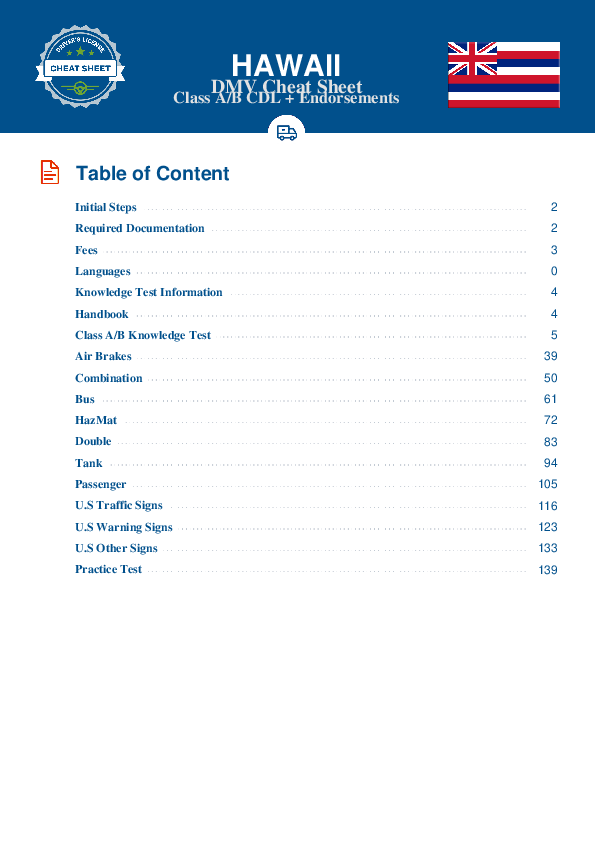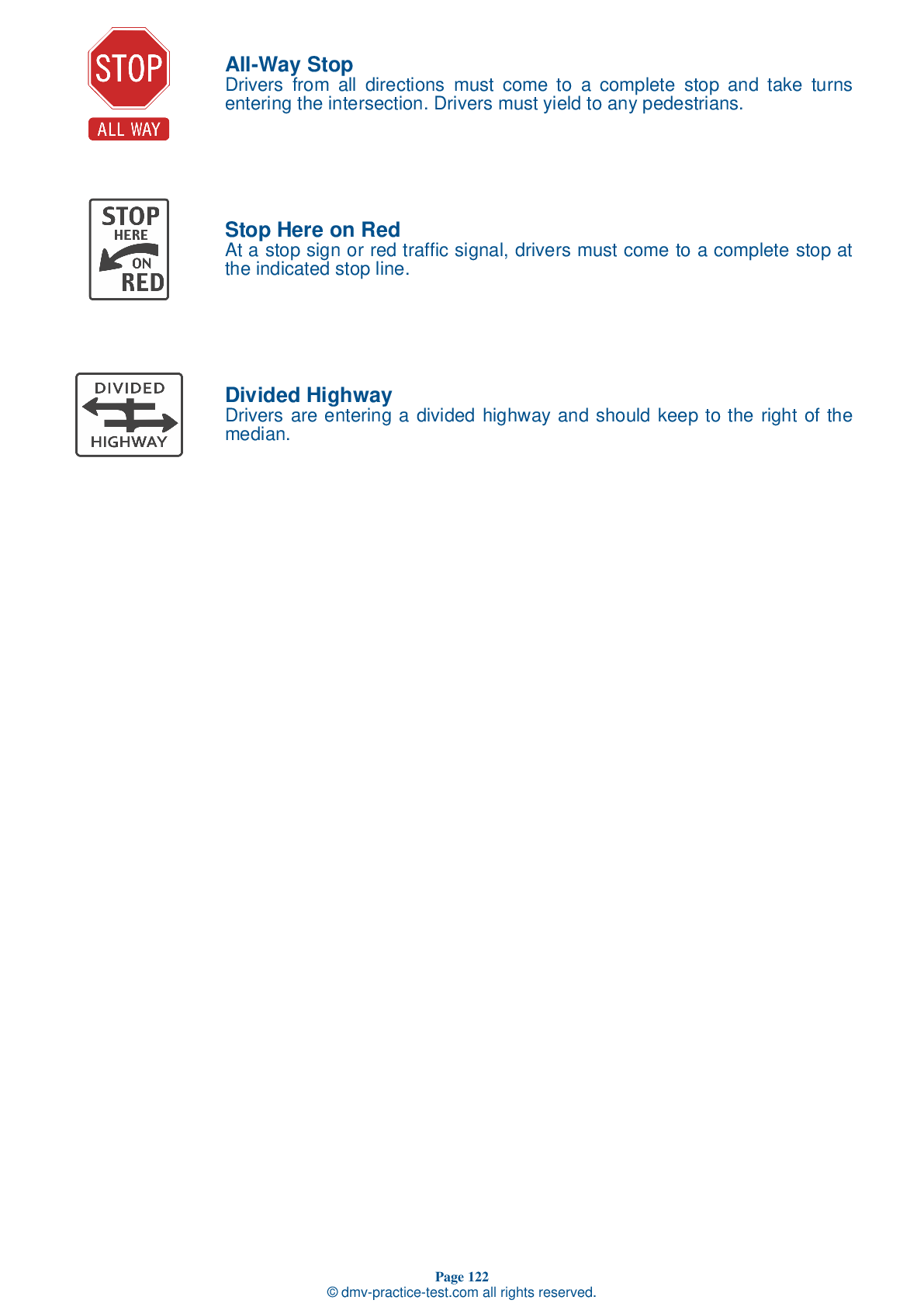Combination Vehicles Practice Test | Hawaii 2025 #2 Page 3 of 3
Train for FREE online with our Hawaii CDL combination vehicle test. The official exam test consists of several obligatory parts, with all of them checking your knowledge of different blocks of road rules. If you need to obtain a HI combination license in 2025, practice as much as possible. Free sample tests published on our website will help you check and improve your knowledge and boost your grades. Please bear in mind that DMV requirements for issuing a combination license may vary from state to state.
15 . Watching the road ahead:
Making a sudden lane change can be dangerous while driving a combination vehicle. You can avoid the need to make a sudden lange change by looking down the road for upcoming obstacles that will require you to change lanes.
16 . What is a bobtail tractor?
Tractors without semi-trailers are referred to as "bobtail tractors." Bobtail tractors are difficult to operate and drivers must exercise caution.
17 . Operating combination vehicles usually requires ____ operating single vehicles.
Combination vehicles are usually heavier and longer than single combination vehicles. Operating a combination vehicle requires a higher level of driving skill than operating a single commercial vehicle.
18 . Trailers built before ____ are not required to have spring brakes.
Trailers built before 1975 are not required to have spring brakes. When parking a trailer without spring brakes, be sure to use wheel chocks to prevent the trailer from rolling.
19 . Which of the following will not help prevent a rig from rolling over?
To help prevent a rig from rolling over, you should keep the weight of the cargo as close to the ground as possible when loading. You should also drive slowly around turns.
20 . Keeping cargo low can:
Rollovers can happen when a combination vehicle is turned too quickly. To help prevent the risk of rollover, it is important to keep the vehicle's center of gravity low by loading cargo as close to the ground as possible.
See the exact questions that will be on the 2025 Hawaii DMV exam.
99.2% of people who use the cheat sheet pass the FIRST TIME
Lillian MCcranie explains how our CDL study guide was helpful in passing the exam and recommends it to everyone.
Cameron tells us how he purchased the CDL exam, and found it to be a useful tool which helped him pass the exam and find a job.



